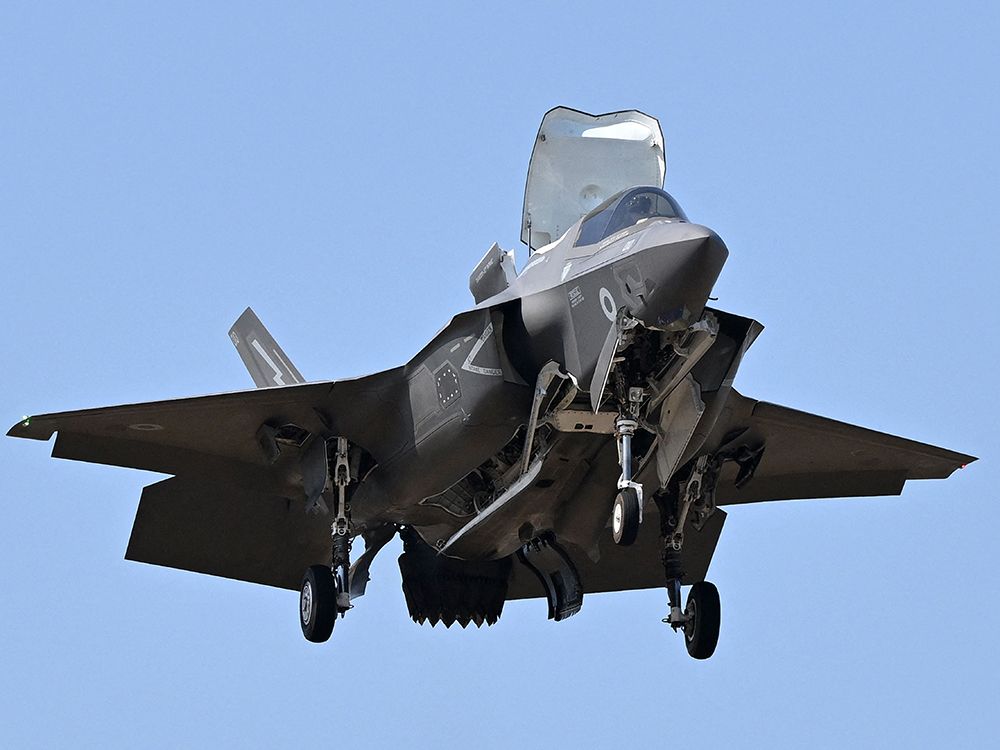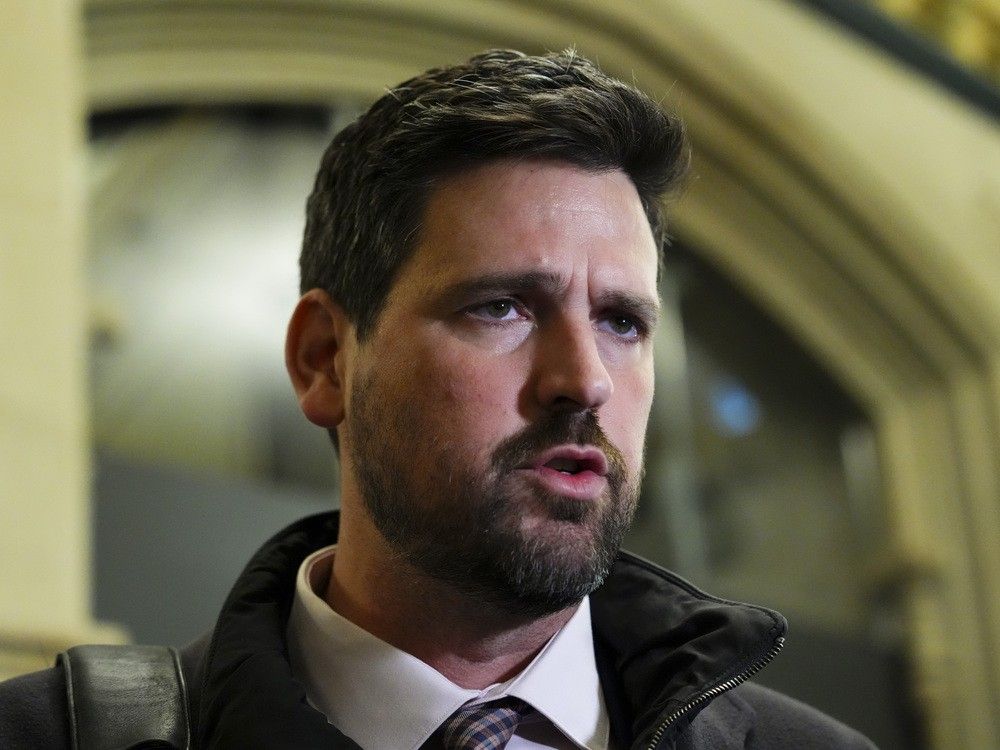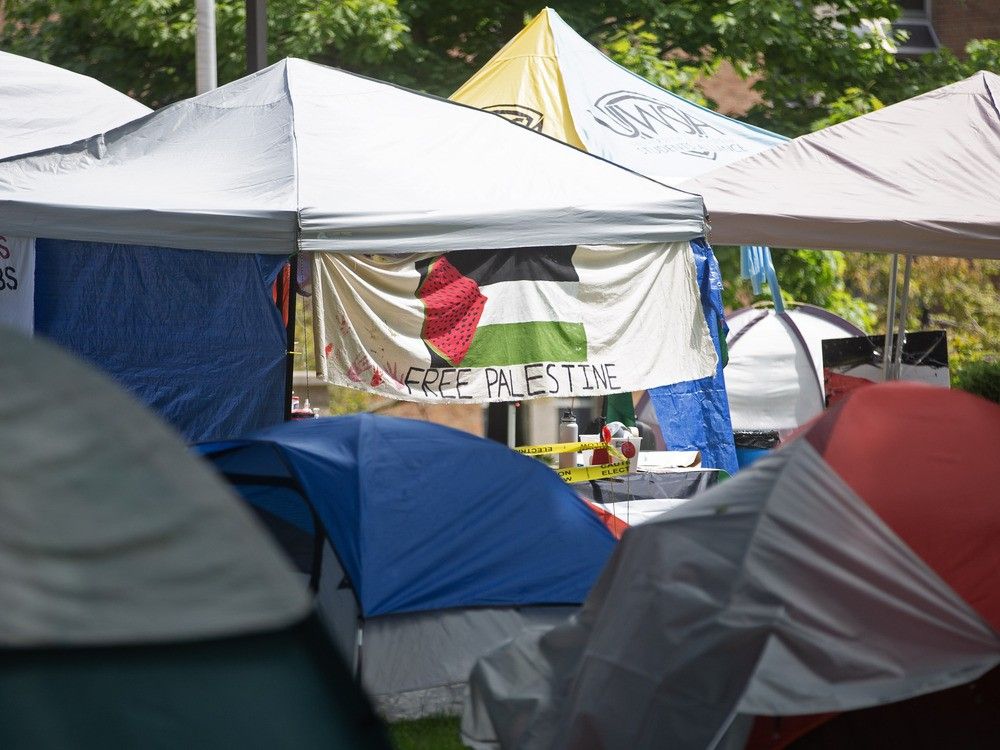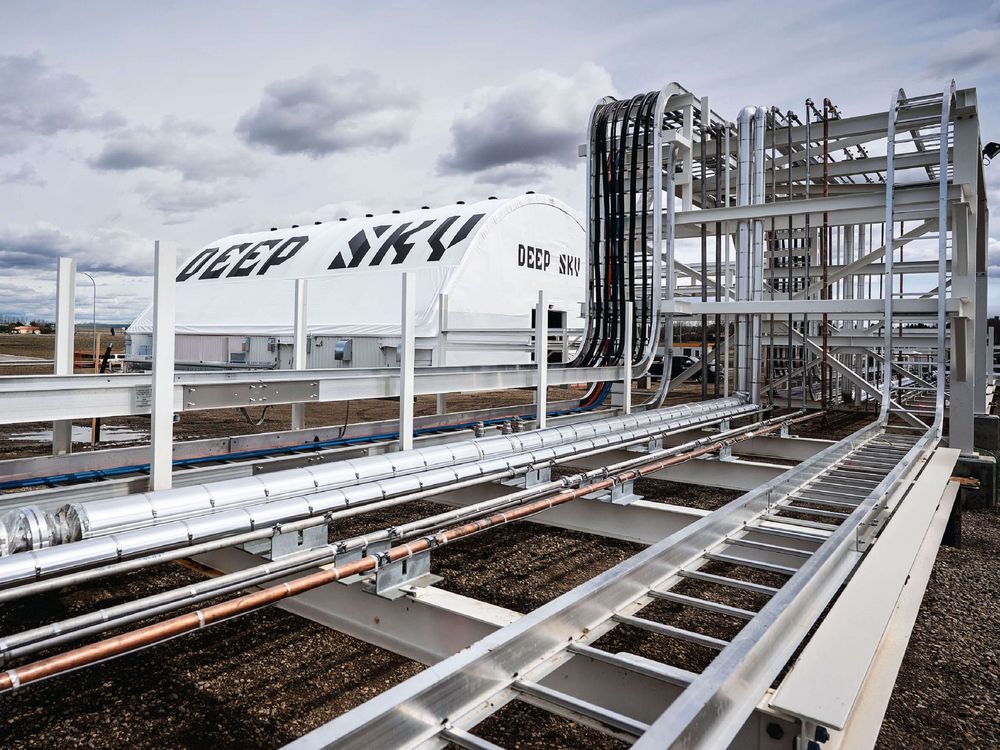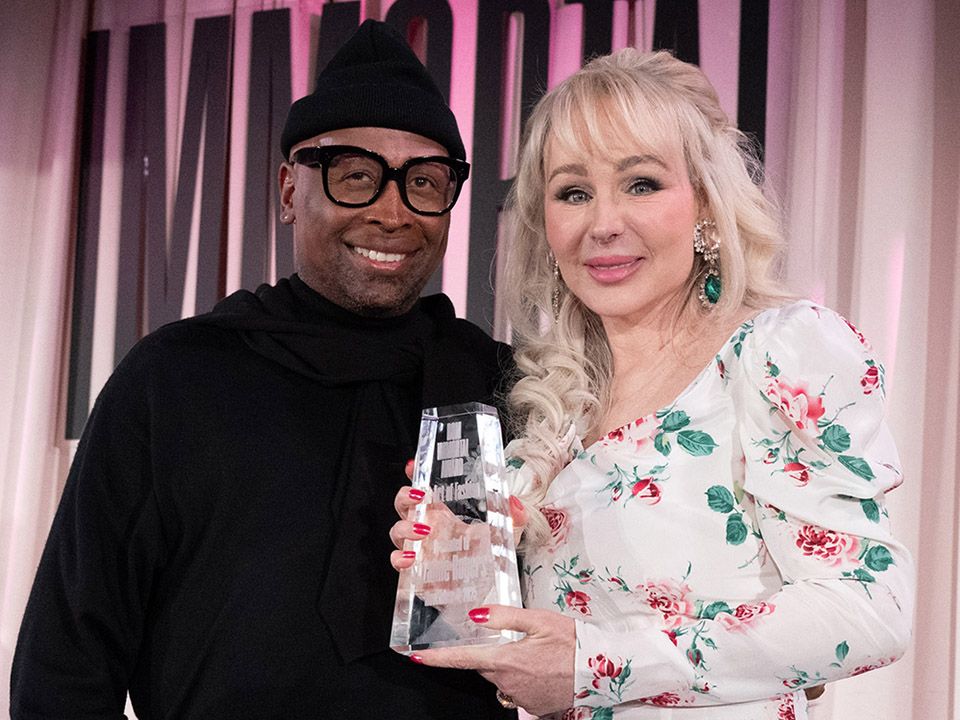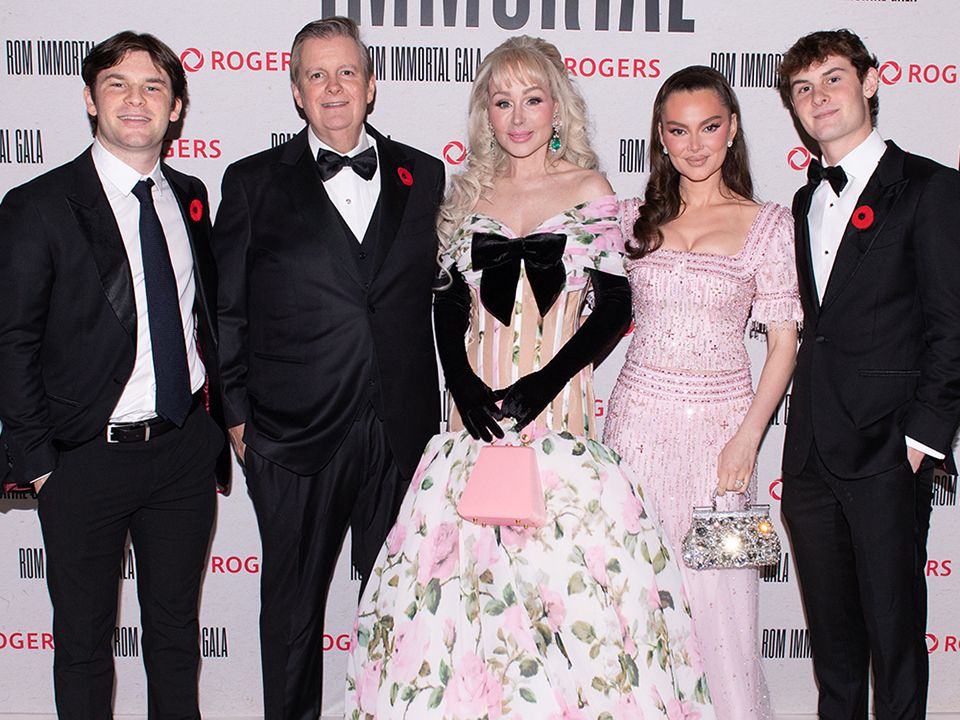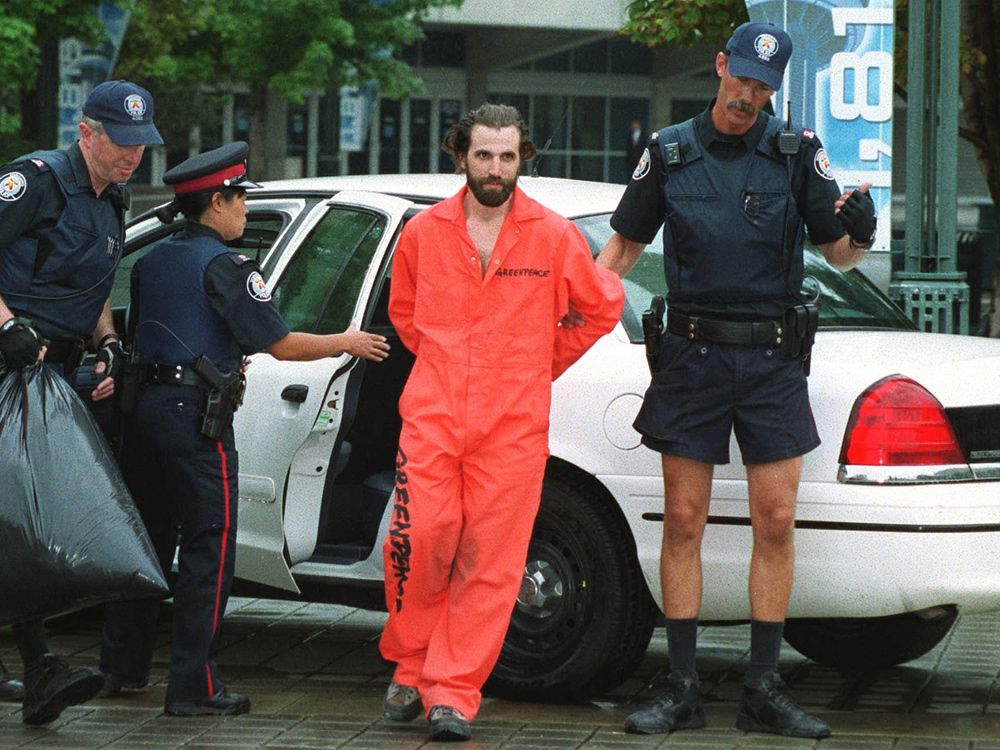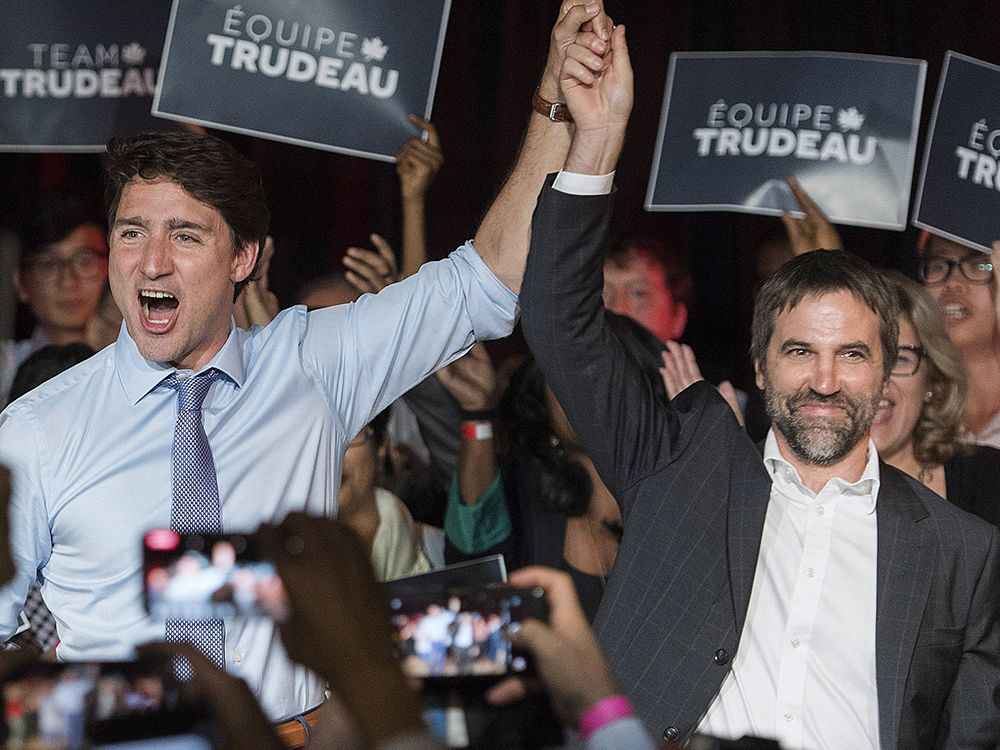
In the end, the verdict came late on a Friday afternoon when Toronto’s courthouse was quiet, and the only other observers in the gallery were a few curious staff.
But two weeks previously, it was a bright and bustling fall morning when Tamar Cupid, 27, was formally placed in the hands of his jury.
Cupid stood up beside his lawyers. The robed registrar spoke. “Members of the jury, look upon the accused, and hearken to his charges.” The registrar read them aloud. Manslaughter, aggravated assault, robbery. And then, with a rhetorical flourish scripted long ago, the registrar spoke the crucial words to the 12 seated jurors: “For his trial he hath put himself upon his country, which country you are.”
With its stirring language, this ceremony that unfolds daily in courtrooms across Canada emphasizes the human side of criminal justice. In this room, Crown and country are not abstract civic concepts, but actual people. Criminal trials are not the robotic application of rules or deference to some all-powerful state authority, but a weirdly psychological communal journey from opening ceremony through evidence to closing statements and onward into the inner sanctum of the jury room, with no deadline or even much instruction about how to actually deliberate, only the colossal task of unanimously deciding someone’s future.
As the judge put it to Cupid’s jury, Canada is entitled to nothing more than this duty, but expects nothing less.
Many Canadians rise to the challenge of jury service. They may be a minority, but a jury summons sets some people’s hearts racing, and curiosity propels them to the courthouse. Others resent the imposition, or the time away from work, or the drudgery of a boring trial, or the horror of a vicious crime. Some simply have other plans. But eager jurors imagine they know what they are in for, and they are up for it. Eager jurors imagine they can be clever, attentive, open-minded, logical, fair, that they can set aside their biases and rally their fellow jurors to justice and truth.
But they are wrong. Or at least a survey of expert opinion from academics, lawyers and judges casts a reasonable doubt on the high self-regard of the eager juror.
Eager jurors, it seems, are no better than the average juror. It might even be better, on balance, for jurors to be a bit reluctant, to feel a little humility or hesitation in the face of the enormity of their task.
The Crown’s prosecution of Tamar Cupid, and the gruelling experience of his jury, put this theory to the test.
A high school class on a field trip tromped in, taking their seats with no more quiet discretion than anyone would expect of high school students, one of whom later moaned to his buddies in the hallway that none of it made sense, that it was just some surveillance video of a parking lot that mostly showed nothing happening, and then some people running around.
It didn’t make sense yet, anyway, not to them. They weren’t the jurors. They weren’t the ones who, as the judge put it, had taken a solemn oath about how they would consider this matter.
“You are the only persons who decide the facts,” Ontario Superior Court Judge Kenneth L. Campbell told Cupid’s jury, as he dismissed two alternates. The remaining 12 would use reason, common sense and their own experience to judge the evidence. They would not use sympathy, prejudice, fear or public opinion.
“You must ignore all those extraneous matters,” Campbell said. “Punishment has nothing to do with your task.”
At their respective tables, lawyers for the prosecution and defence sized up the jurors who were their audience.
It was more or less representative. One worked at a major online media company. Another at a major Toronto tourist destination. One was a marketing executive. There were two Black men, two Asian men and everyone else was white. There were seven men and five women. Five swore on a holy book and seven solemnly affirmed their oath. Most were in their 40s or 50s; no one was younger than 30. Everyone looked alert, serious, nervous.
“Essentially, you’re on a stage in a courtroom,” said
Steven Skurka
, a criminal defence lawyer who was not involved in Cupid’s case. Skurka has run many jury trials, including the famous 1999 prosecution of his client
John Paul Roby
, the former Boy Scout leader and Maple Leaf Gardens usher in the notorious sex abuse scandal.
“We watch the dynamic and reactions. There will be visceral reactions, laughter, nodding or even nodding off,” Skurka said.
There is no perfect juror. But as the former Ontario Court of Appeal judge
David Watt
wrote in his book Helping Jurors Understand, there is a common notion of the ideal juror. It is of a passive, observant, empty vessel, the target of one-way linear communication, with perfectly accurate recall for information, someone who suspends judgment until the trial is over. This myth of the perfect juror is an “amalgam of assumptions and wishful thinking about human nature,” and, Watt writes, “is not rational because it cannot be validated empirically.”
We simply never know the truth beyond what a jury decides, and we never know how jurors deliberate, or how they decide, or why. Unlike judges, juries give no reasons for their verdicts, and it is literally a crime in Canada to reveal details from inside the jury room.
So, if we want to know how jurors really work and think, we have to do away with some of those assumptions. As Watt writes, real jurors are active. They have frames of reference through which they evaluate evidence. They can be different sorts of people, who think in different ways.
Skurka said the two most concerning types are the dominant juror and the vengeful juror. “Those are very dangerous,” Skurka said. But they are not the only common archetype.
On Cupid’s jury, it was not obvious which ones might resemble the illustrated jurors that accompany this story, which emerged from interviews with experts in Canadian jury trials. But some were there. There was a 70-something Boomer, whom Skurka imagines is less likely to be moved by modern political ideologies such as #MeToo.
There was a Millennial, a young adult who retains the idealism and faint cluelessness of youth. The one they all chose as foreman was a neatly presented, professional middle-aged white man. Over the course of the trial, other traits could be seen: the pensive juror, the easily distracted juror. It seemed likely that among them was an impoverished juror, a reluctant juror, a forceful personality, and jurors with politics from the woke authoritarian left all the way to the anti-authoritarian conspiracist right.
And, of course, there seemed to be at least a couple of eager jurors, who see themselves as ideally suited to the task.
These are the keeners, the true crime podcast enthusiasts, the cosy crime-show watchers. They are the wannabes, the one to whom much of a judge’s advice is directed: Don’t take your notes home. Don’t Google the case. Don’t post about it on social media. Don’t visit the crime scene. Don’t talk to your friends about this. The eager juror is keen to obey, but so excited that it is hard.
Self-confidence is part of that problem. Just as an eyewitness’s confidence in picking someone out of a lineup is no guide to their accuracy, eager jurors tend to get themselves wrong. Their enthusiasm is no guide to their aptitude. An eager juror, it turns out, is no better than any other random person who gets called for jury duty.
“What we know is that the first 12 jurors are just about as good as any others,“ said Tara Burke, director of the Psychology and Law Lab at Toronto Metropolitan University.
II
A few years ago, before the pandemic,
Dennis Oland
was facing his second trial for allegedly murdering his millionaire father, Richard Oland, in 2011, by bludgeoning him to death in Richard’s office in Saint John, N.B. The first jury found Oland guilty of second-degree murder, but the Appeal Court ordered a new trial because of errors in the judge’s instructions. Everybody knew this, especially everybody in the Maritimes. This was the Moosehead beer family in ignominy.
Oland’s legal team was worried that there was so much publicity that he might not get a fair trial the second time around.
Burke studies pretrial publicity and the legal remedies when it threatens to harm a jury’s fairness, such as changing the location of the trial. She thinks jurors are generally able to set aside their biases.
“I defend juries in that sense,” Burke said. “I don’t think they are as easily swayed as some people think.”
Still, in Oland’s case, this was not just a few negative stories in the newspaper. Oland’s first trial had been a major event about which it seemed everyone had already formed a firm opinion.
“The problem is that in Canada it is really hard to measure this. It is impossible, actually, at least not with prospective jurors, people part of the jury panel,” said Veronica Stinson, professor of psychology at Saint Mary’s University in Halifax and an expert in how social cognitive psychology intersects with the legal system.
Stinson has done jury consulting work in the United States. She advised on jury selections and interviewed jurors after the fact to discuss what they heard and what they thought, “stuff that would get me arrested in Canada,” Stinson said.
As it turned out, the judge for Oland’s retrial decided these problems of pretrial publicity and bias could be remedied with questions asked of the prospective jurors about what they knew about the case, whether they could keep an open mind, and whether they “believe that wealthy people receive preferential treatment under the law.” A jury was chosen but then came a bombshell revelation that a police officer seated at the prosecution table had been improperly using a police database to research people in the jury pool.
This caused a mistrial
, and the case was heard by a judge alone.
Earlier, though, there had been talk of a possible venue change.
So, Oland’s team hired Stinson for a public opinion survey in 2018, a few months before jury selection began. By interviewing 1,203 people in three possible venues (Fredericton, Moncton and Saint John), Stinson found that 98 per cent were familiar with the case, 67 per cent had followed it closely, 31 per cent had a negative view of Oland, 27 per cent thought he was guilty and did not need to know more, 18 per cent thought he was not guilty, and 70 per cent felt they could keep an open mind.
Where they lived did not seem to have much of an effect, so there was no obvious benefit to a venue change for the defence. But one striking finding was that nine per cent said they would very much like to serve on his jury. This seemed odd.
“Nine per cent is a lot to me, I thought, and also potentially worrisome,” Stinson said. It was just a hunch, but she imagined they could be anticipating a chance to stick it to the rich man, to convict this privileged son who had known nothing but luxury his whole life.
“There are several pathways that can lead someone to be an eager juror, and these are not mutually exclusive or independent of each other,” said Stinson. These include a desire for excitement or a cure for boredom, an interest in fame or simple curiosity about the process or the case.
Her survey on the Oland case is, therefore, a rare piece of empirical evidence for why eager jurors are so eager. Asked to say why they “very much would like to serve on (Oland’s) jury,” these eager jurors said things such as:
“Because I consider myself astute enough to not be influenced by some fast-talking lawyer at a trial.”
“I am a natural at being fair.”
“Because I could have a say in him getting the just punishment he deserves.”
“I think he’s guilty. I’d get to see the proof that he really did it.”
“Because I don’t think that he is guilty.”
Worryingly, these motivations of eager jurors clearly include the impulse to decide a case before actually hearing the evidence or the law. This is the sinister side of eagerness, and for Oland, it could have been disastrous. In the end, the judge on his retrial found him not guilty, and the murder remains unsolved.
III
It is early on a Sunday evening in June 2023. Weekend traffic is slowing down at the southwest corner of Eglinton and Brimley, in the Toronto suburb of Scarborough. But the sun is still bright and there are plenty of people around. Commercial security cameras cover the scene from almost every possible angle.
Just beyond The Beer Store, Tamar Cupid and his girlfriend, whom he has been with since high school, are at the strip mall with his friend.
The friend approaches an SUV in which Ifeanyichukwu Oseke, 28, from Nigeria, is a passenger.
Oseke owes Cupid $100 in drinks money, lent a few weeks earlier in a nearby bar, which he has so far refused to repay. The conflict begins when Cupid’s friend confronts Oseke, but soon Cupid steps in, talking to Oseke through the passenger-side window.
This is the critical moment that will bring him before his jury. In what he would later describe as an overreaction, Cupid reaches into the car and rips a chain from around Oseke’s neck. This is the robbery to which Cupid will plead guilty, while denying aggravated assault and manslaughter.
Cupid’s friend punches Oseke and runs off. The SUV goes after him, but soon returns. Now Oseke is driving. He drives straight at Cupid, who leaps out of the way. It is the kind of close call that would rouse an adrenalin rush in Cupid. A medical examiner later found cocaine in Oseke’s blood, ingested sometime that day. The mood was heightened.
On foot, Oseke chases Cupid. Now Oseke is armed with a screwdriver. Cupid, armed with a folding knife, slashes Oseke in the cheek, causing a superficial wound. This is the alleged aggravated assault, which Cupid denies on the grounds of self-defence. Cupid keeps running away from Oseke around the parking lot, even into traffic.
As he chases Cupid, Oseke drops a satchel that Cupid’s girlfriend picks up. Oseke comes back and thinks she is stealing from it. He holds her, interrogates and threatens her.
Oseke leaves in the SUV, comes back, and drives directly at Cupid and his girlfriend as they run away along the strip mall sidewalk. This is an even closer miss, and the SUV smashes into a bank. Oseke, who was behind the wheel, leaves it in gear and chases them on foot. Oseke is the bigger man. Face to face, Cupid stabs him once with the small folding knife. The blade enters just above Oseke’s left nipple, pierces the lung, and severs the pulmonary trunk, a major blood vessel. This is the alleged manslaughter. Cupid leaves the scene with his girlfriend, apparently not knowing that Oseke is pronounced dead soon after emergency services get him to hospital.
A warrant goes out across Canada for Cupid. He is arrested a week later and spends a year in jail before getting bail last summer. The original charge of second-degree murder is removed after a preliminary hearing and replaced with the three lesser charges. Cupid admits robbing the chain but claims the knife wounds on Oseke were the result of reasonable efforts to defend himself and his girlfriend. His jury trial looms.
IV
College Street in Little Italy is tourist brochure Toronto, with red-brick Victorians up the side streets and trattorias looking out at passing streetcars.
The Royal Theatre is right in the middle of it. Which is to say, this is not some fringe show. This is mainstream modern culture.
Tonight’s show is
The Jury Experience
, billed as an immersive courtroom case, and the audience is full of hundreds of eager jurors.
The Great Seal of the state of California hanging behind the judge on stage is the first clue this is not going to be a glimpse into the culture of Canadian justice. But it just keeps getting worse, with the judge somehow giving evidence, and lame twists that the audience votes on through an app, all about a case in which an engineer designed a self-driving car that killed a cyclist to avoid an accident that might have hurt its passengers.
In the end, your National Post correspondent voted to convict, but less out of a sense of justice and more out a sense of vengeance at this preposterously cartoonish production. Somebody should pay for this atrocity.
This is what the popularity of jury dramas has done. They have created a casual esthetics of decision-making in criminal justice, divorced from the underlying facts and law. Verdicts are appealing to eager jurors, not only as logical conclusions or rational arguments, but as works of art, dramatic climaxes, acts of vengeance or mercy. They are, in the modern lingo, performative. You can watch them on TV. Sometimes you can even do them with friends, on your phones, over theatre lobby drinks on a College Street night out. Verdicts display something to the viewing public as much as they do anything for the fate of the accused.
Verdicts play on the emotions, the heart, the soul, the critical eye. How much cooler is it to convict the malingerer who falsely claims a diminished capacity for moral wrongdoing? Or to see beyond police tunnel vision to acquit the falsely accused who never stood a chance in this unfair world?
The accused engineer in The Jury Experience this night was found not guilty of negligence, but with a lower percentage of “not guilty” votes than a preliminary audience vote earlier in the show, so some minds were changed. None were blown.
With its jury of archetypal 1950s New Yorkers, the classic film
12 Angry Men
did a better job of dramatizing how different types of people come together to make one momentous binary decision: guilty or no? It set the cinematic standard for the pursuit of justice against the vagaries of human psychology, as 11 others — a salesman, a stockbroker, a high-school football coach, etc., each of them in their own way distracted, or bigoted, or sensitive or easily influenced — come around one by one to the view of Juror 8, played by Henry Fonda, who was the first to consider innocence.
“Trials are too important to be left up to juries,” says jury consultant Rankin Fitch, played by
Gene Hackman
, in the 2003 film Runaway Jury. When he first meets crusading plaintiff attorney Wendell Rohr, played by Dustin Hoffman, Fitch’s dialogue lays out his cynical view of jury service.
“You think your average juror is King Solomon? No, he’s a roofer with a mortgage. He wants to go home and sit in his BarcaLounger and let the cable TV wash over him. And this man doesn’t give a single solitary droplet of shit about truth, justice or your American way.”
“They’re people, Fitch,” says Rohr.
“My point exactly,” Fitch says, witheringly.
This cynicism remains, but it fails to capture that many people really do want to be jurors, and for diverse reasons. Sometimes the desire arises less from eagerness or curiosity and more as a matter of principle.
Brenda Fine, for example, has been summoned for jury duty three times in the last four years with a letter from the sheriff’s office in Vancouver, where she is a post-secondary math instructor. The most recent was for a 10-day civil trial. Considering how to reply, she was conflicted, as both a citizen and an employee.
“I thought, I guess this is my duty, and this is going to mess things up for people I work with,” Fine said, wondering why she was unable to declare her willingness to serve, just not in the middle of an academic term.
“I was intrigued. I wouldn’t say I was excited, I thought it would be interesting. I’m under no illusion that it’s an exciting experience,” Fine said. “My experience is that most people are like, ‘Oh, jury duty, that’s the last thing I want to do. It’s going to be so boring.’ I thought I was on the eager end of that spectrum.”
She ended up doing what many people do and found a way out of it. Her boss wrote her a note explaining the hardship her absence from class would cause.
“Everyone should get a letter from their boss like this,” she said. “I think he called me irreplaceable.”
V
There are many pitfalls for the eager citizen on the way to becoming an eager juror.
During the Cupid jury’s deliberations, for example, on another trial in the same courthouse, a juror was kicked off a jury for falling asleep.
The more common reason to exclude a juror is what is known as a challenge for cause, when a person who would otherwise be picked as a juror is interrogated about their ability to set aside any bias.
For Cupid, who is Black, a challenge for cause about racial bias led the judge to excuse one potential juror.
“I think people in general, when a judge asks if you can be fair, most people would say, ‘Yes, of course I can be fair,’” Stinson said. “A judge is asking me to be fair, what am I going to say, I’m unfair?”
Burke similarly sees such questions as mostly ineffective efforts to eliminate bias, like boxes ticked as a formality.
“There’s no diagnosticity to how people answer that question. It’s just a check mark,” Burke said. In fact, she thinks people who say, “Oh, I’m not sure,” would nevertheless be good jurors.
Skurka, the defence lawyer, is more blunt. “Essentially, you’re looking for the honest racist,” he said. In his view, it is only people who say they cannot set their bias aside who should be excluded. But these people are the rare exception, not the rule.
Lawyers in Canada used to be able to reject prospective jurors for no reason at all, known as a peremptory challenge. Those were
eliminated in 2019
by legislation that was partly inspired by the Saskatchewan prosecution of Gerald Stanley for the
2016 shooting of Colten Boushie
, a young Indigenous man who was on Stanley’s farm. In selecting that jury, defence use of peremptory challenges led the court to exclude several people who appeared to be Indigenous, resulting in what appeared to be an all-white jury, which acquitted Stanley.
“You want the eager juror who wants to be there and be fair,” Skurka said. “You can see it in their eyes. It’s almost like dating. You can tell if someone wants to be there or not.”
“Often a jury ends up voting for the better narrative, the narrative that makes more sense,” said Burke.
This is not always a logical or even purely rational decision. But it frames where a jury might start their deliberations. It influences what each juror pays closest attention to, and what they might ignore. “That’s just how we think,” Burke said.
When he gave his closing arguments about Cupid, Crown prosecutor Constantinos Stratos was flat, perfunctory, obviously reading a script, and he sometimes misread his own words. He had the air of a slightly distracted bureaucrat, competent, but with no skin in the game, not really trying. His tone never soared. There were no artful punchlines, no emotional connection, no appeal to justice for the victim, just a scripted argument about what the video shows, not entirely convincing.
“That veil of innocence has now been pulled aside and you can now see him for who he is,” Stratos said.
He did not get any smiles, a sure sign of connection. But defence lawyer Gabriel Gross-Stein did, a couple of times. He even got a murmur of a laugh when he explained that, because his client Cupid testified in his own defence, the Crown gets to give its closing arguments last.
“You and I might think that is not fair. Maybe only I think it’s not fair,” he said.
He was clearly playing to all of them, not too folksy, not cringey, not patronizing. But engaged, good-natured and dramatic enough to hold attention and be almost moving.
“Each one of you has the power individually to say, ‘No, I’m not convinced,’” Gross-Stein said.
He read his script like he was talking to them. At one point he directed their attention to one “salient” detail about body language in the surveillance video but quickly corrected himself to say “important” because salient sounds too clever, and people hate that, even if they know what it means. It’s a lawyer word, and jurors aren’t lawyers.
In fact, lawyers cannot be jurors. Neither can medical practitioners actively engaged in practice. Neither can police or firefighters or soldiers or other members of the justice system. There are exceptions for illness, hardship and religious objections. But everyone else is fair game, whether they want to be or not.
VI
It is a rare jury that asks their judge for a glass of wine. And it is a rare judge who grants them two each. Yet, here we are, late in the afternoon on the second day of deliberations in Toronto’s main courthouse, and the tension is setting in. Nerves are frayed. People are getting weary. These jurors by now have tried everything, and still they have no agreement. It is wine o’clock.
The jury had a hard night, their first night sequestered in a hotel. This is the subject of the first question they ask, when they submit three questions in writing. They want to change hotels. Last night was “problematic,” they said. The walls were thin. There were fireworks outside. The taxi ride was long.
Question Two was: “May we have a glass of wine or one alcoholic beverage tonight?” Question Three was: Can they eat at the hotel instead of at court and retire after dinner.
In the jury’s absence, the court had a bit of chuckle about all this. But the judge’s answer when they returned was serious and to the point. First, they were going to be at a different hotel anyway. Second, we’re all adults here, the judge said. No one should be downing half a bottle of wine and three double whiskeys, but one drink, even two drinks, is perfectly acceptable. The jurors all lean back and smile with relief. And, yes, they can eat at the hotel and go to bed right after.
Their work is challenging. Judge Campbell told them not to speculate or make up theories, not to pick and choose among his many instructions, and to be willing to change their mind. Their verdict must be unanimous, but the path of reasoning any given juror takes to get to the conclusion can be different than the others.
“You, not I, decide what happened in this case,” Campbell said. The deliberation has no deadline. It “will take as long as it takes.”
Crucially, he did not tell them how exactly to deliberate. Burke said there are no firm rules about how to start deliberations, but research on American juries has turned up two main options. An “evidence-driven” jury will talk about evidence first, withholding their votes until they have taken a broad and thoughtful approach.
A “verdict-driven” jury will start by taking a vote, to see who thinks what and who is on whose side. In these cases, Burke said, a stated opinion can be psychologically hard to walk back, and deliberations can become less about evidence and law and more about trying to convince each other and change minds. Everyone is forced to be argumentative from the start.
This “verdict-driven” approach is what gives 12 Angry Men its dramatic tension, and its narrative arc of a 1-11 vote slowly transforming into a 12-0 vote. Burke thinks this rarely if ever happens in real life. She thinks there are no general patterns. “It’s the dynamic of the people in the room,” Burke said.
Sooner or later, a jury will hit a wall and need to ask a proper question, as Cupid’s jury did, not long after resolving the hospitality issues.
“Your honour, do we need to satisfy all three elements of self-defence, or just one to be satisfied?” they asked.
It was a poorly formed question that revealed a slight misunderstanding of the issue, which ironically is often the best and most rewarding sort of question to ask.
It is not Cupid’s burden to prove he acted in self-defence, the judge explained. It is the Crown’s burden to prove he did not. Self-defence has three elements under the law: Cupid must have had a reasonable belief that force was being threatened against him or his girlfriend. He must have acted with the purpose of defending against that force. And his action must have been reasonable in the circumstances.
The jurors were to consider those elements in two separate alleged crimes that happened a few brief and harried moments apart: aggravated assault for the cheek slash, manslaughter for the chest stab. If the Crown proves beyond a reasonable doubt that any one of these three elements does not apply, it has disproven self-defence as a justification for the aggravated assault or for the killing.
Reasonableness is a tricky standard. It seems devilishly subjective, but the judge explained that a reasonable person is sane and sober, not overly excitable, aggressive or fearful, and with the same general characteristics as Cupid, including past experience with Oseke about such things as his propensity to violence or whether he was likely to have a gun.
Oseke did not have a gun, but he did have the screwdriver, which was recovered from the front seat of the SUV he was driving.
“Bottom line is nobody understands instructions. That’s the reality,” Burke said. She imagined there were two camps who had split on how to analyze this self-defence issue, and they were probably talking past each other for a while before finally deciding to ask the judge for help. “Someone went back and said, ‘Ha! I knew it.’”
“I think, generally, juries really try hard,” Burke said. “I really think people take it pretty seriously and do their best.”
VII
Day 4 of Cupid’s jury deliberations. The Blue Jays play tonight. A court officer is overheard on the phone in the hallway making arrangements for the jurors to watch the game at the hotel if there is no verdict by nightfall. They cannot access news media, but sports are evidently OK. Or maybe there is an informal playoffs exception.
The jurors also cannot access their phones and some problems have arisen. On Day 2, one of them forgot to pay an urgent insurance bill and so two court staff observed the phone as the bill was paid and reported back to the judge that no other apps were accessed.
The longest jury deliberation in Canadian history was 18 days. Serial killer Robert Pickton’s jury went nine days. Four days is long, but not uncommon.
Suddenly, the courtroom door is unlocked. The registrar starts robing up. “We have a verdict,” whispers a court officer.
It is over in what seems like a flash. The jury enters, everyone’s eyes downcast. The judge silently reads the verdict sheet. The foreperson stands, reads out the verdicts by number to the registrar. There is no obvious emotional reaction from anyone.
Cupid already admitted guilt on robbery at the outset of the trial. Now, the jury has found him guilty of aggravated assault, for slashing Oseke’s cheek.
Truly, as the Crown said a few days previously in his closing remarks, the “veil of innocence has now been pulled aside and you can now see him for who he is.”
But on this afternoon, there is a fresh note of poignancy to this comment. Now it seems true in a more profound way. Because on the first count, the central count, the allegation of manslaughter with its potential life sentence, Tamar Cupid is not guilty.

